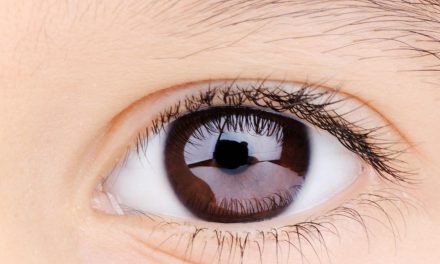Sugar is present in large part of the food we eat, especially among soft drinks, candies, sauces, desserts, dairy products and breakfast cereals, among many others.
According to the Royal Spanish Academy, sugar is a crystalline substance belonging to the chemical group of carbohydrates, with a sweet taste and white colour in its pure state, soluble in water, obtained from sweet cane, beets and other vegetables.
Ordinary sugar (table sugar) or sucrose is a disaccharide made up of two monosaccharides: glucose and fructose. Both glucose and fructose are also considered sugars.
Lactose is a disaccharide made up of glucose and galactose and known as “milk sugar.” Therefore, glucose, fructose and galactose are simple sugars that can combine to form table sugar (glucose + fructose) and lactose (glucose + galactose). And both these monosaccharides and disaccharides are considered sugars.
TYPES OF CARBOHYDRATES AND THEIR RESPONSE IN THE BODY
Carbohydrates can be found in different forms. In their simplest form, they are called monosaccharides, and the most common are fructose, glucose and galactose, as we have previously discussed.
When two of the above are joined, they form a disaccharide such as sucrose (table sugar), lactose (milk sugar) and maltose. And finally, those that are composed of more than two monosaccharides are called polysaccharides, among which we find starches and fibre.
Once ingested, the more complex carbohydrates will be reduced to their simplest form, glucose, and travel to the liver to be processed.
Some of this glucose will go into the bloodstream to provide energy to the different organs. The glucose that we eat and that our body does not use at that time will be stored in the liver and muscle cells in the form of a compound called glycogen (how our body stores glucose) or in adipose tissue (fat).
Whether it goes to one or the other will depend on several factors, but one of the most important will be the degree and type of regular physical activity you have. Suppose this is practically nil (in sedentary people). In that case, a large part will go to adipose tissue (fat), if on the contrary, that activity is very high, practically all will go to muscle tissue and the liver. However, the capacity of these glycogen stores is limited, unlike fat, which is unlimited. Once it is overcome, this excess glucose will travel to the adipose tissue and be stored as fat. This usually happens when we eat more calories than we use, even when we do a lot of physical activity.
The WHO itself recommends that, for healthy nutrition, the consumption of free sugars should be 5% of the daily caloric intake, which is equivalent to about 25 grams per day – or, which is the same, about six cubes of sugar-. Otherwise, doctors, nutritionists and health experts agree that some of the harmful effects that excess processed sugar causes in our body could occur.
Weight gain and blood pressure gain. Our body rapidly absorbs these sugars, sharply increasing blood glucose and releasing insulin in large amounts, stimulating fat storage. This, in addition, promotes hypertension.
Malnutrition It has been proven that consuming excessive sugar reduces the consumption of proteins, fats, carbohydrates, minerals (such as iron or zinc) and vitamins (such as D and E). They are empty calories that fill and do not feed.
Increased risk of Alzheimer's. Various studies reveal that a high daily sugar intake can affect our cognitive faculties and increase the risk of developing dementia or Alzheimer's.
The appearance of wrinkles and acne. Sugar produces AGEs, molecules that damage collagen and elastin, making it harder for the skin to recover and age earlier.
The appearance of cavities and deterioration of dental cavities. Cavities are considered a chronic disease and appear due to bacteria that feed on sugars and produce the acid responsible for the deterioration of tooth enamel.If the harmful effects of processed sugars are proven, why don’t governments and institutions formulate policies and public health measures to reduce their consumption and prevent diseases? WHO notes that its recommendations should also be used “in conjunction with other recommendations on nutrients and other dietary targets, especially related to fats and fatty acids (particularly saturated and trans fatty acids), to guide the formulation of effective policies related to nutrition and the development of programs that promote a healthy diet
Sugar can cause cancer.
Cancer has become one of the world’s leading causes of death and is characterized by uncontrolled growth and the multiplication of harmful cells. Insulin is one of the essential hormones in regulating this growth.
For this reason, many scientists believe that the constant high insulin levels caused by sugar consumption can contribute to the development of cancer. This is compounded by the fact that sugar facilitates inflammation, another of the determining factors for the development of cancer.
Of course, sugar consumption does not determine whether a person has cancer or not, but it is a factor that we should not ignore. To avoid taking the risk, you should try to have a healthy diet and a healthy lifestyle.
Due to its effects on hormones and the brain, sugar can promote obesity
processed sugar
The properties of each food have different effects on the body and the hormones that control food consumption. Several studies have shown that the effects of fructose and glucose are very different.
Fructose-containing foods can cause lethargy or decreased physical activity and do not cause satiety in the areas of the brain that control hunger. Over time, this can lead to an increased urge to eat foods high in sugar.
The main problem is that this need becomes a vicious cycle from which it is difficult to get out. The more sugar you consume, the more sedentary your body is, and the more you need to consume sugar.
We must remember that the fructose that generates negative results is the one we take through processed foods. The natural fructose that we find in fruit does not have the same harmful effects because its quantity is minimal and has not been modified with chemicals of any kind.





